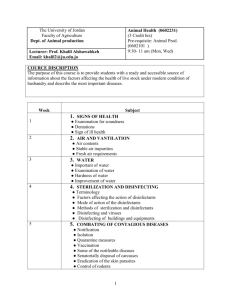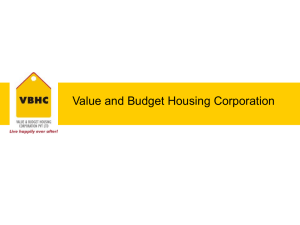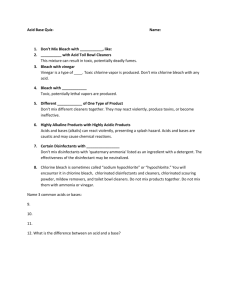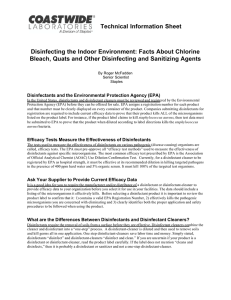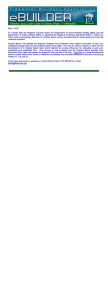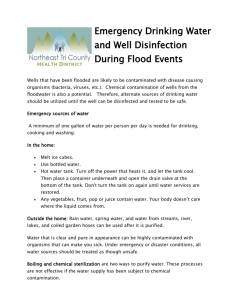INDOOR SEWAGE SPILL CLEANUP
advertisement
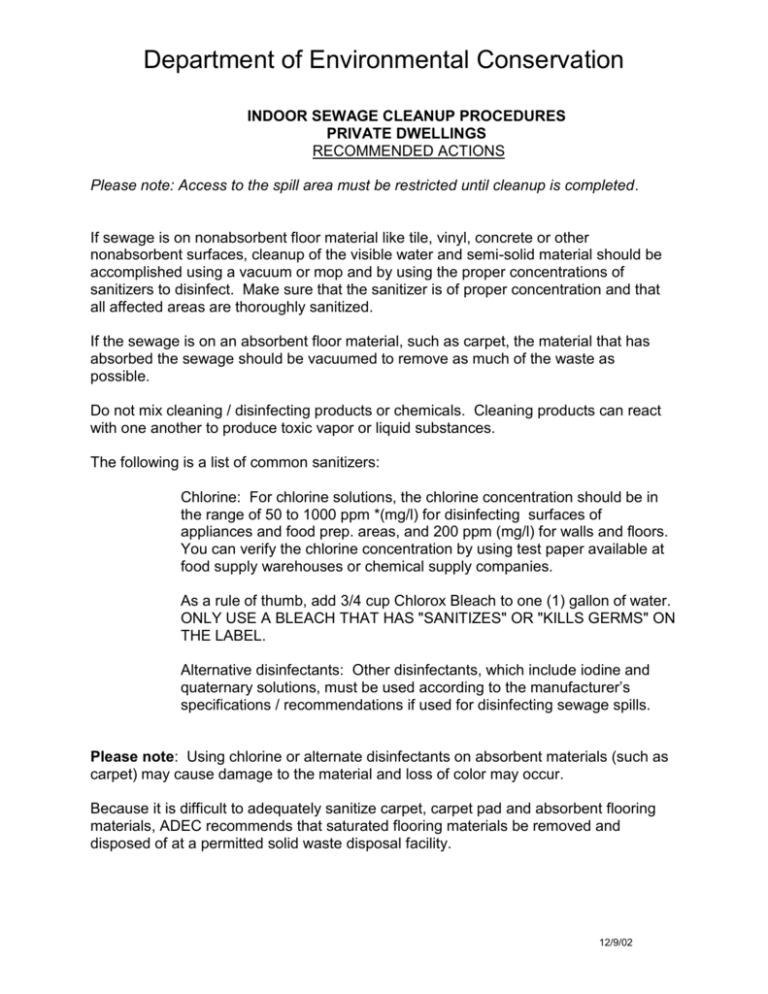
Department of Environmental Conservation INDOOR SEWAGE CLEANUP PROCEDURES PRIVATE DWELLINGS RECOMMENDED ACTIONS Please note: Access to the spill area must be restricted until cleanup is completed. If sewage is on nonabsorbent floor material like tile, vinyl, concrete or other nonabsorbent surfaces, cleanup of the visible water and semi-solid material should be accomplished using a vacuum or mop and by using the proper concentrations of sanitizers to disinfect. Make sure that the sanitizer is of proper concentration and that all affected areas are thoroughly sanitized. If the sewage is on an absorbent floor material, such as carpet, the material that has absorbed the sewage should be vacuumed to remove as much of the waste as possible. Do not mix cleaning / disinfecting products or chemicals. Cleaning products can react with one another to produce toxic vapor or liquid substances. The following is a list of common sanitizers: Chlorine: For chlorine solutions, the chlorine concentration should be in the range of 50 to 1000 ppm *(mg/l) for disinfecting surfaces of appliances and food prep. areas, and 200 ppm (mg/l) for walls and floors. You can verify the chlorine concentration by using test paper available at food supply warehouses or chemical supply companies. As a rule of thumb, add 3/4 cup Chlorox Bleach to one (1) gallon of water. ONLY USE A BLEACH THAT HAS "SANITIZES" OR "KILLS GERMS" ON THE LABEL. Alternative disinfectants: Other disinfectants, which include iodine and quaternary solutions, must be used according to the manufacturer’s specifications / recommendations if used for disinfecting sewage spills. Please note: Using chlorine or alternate disinfectants on absorbent materials (such as carpet) may cause damage to the material and loss of color may occur. Because it is difficult to adequately sanitize carpet, carpet pad and absorbent flooring materials, ADEC recommends that saturated flooring materials be removed and disposed of at a permitted solid waste disposal facility. 12/9/02

